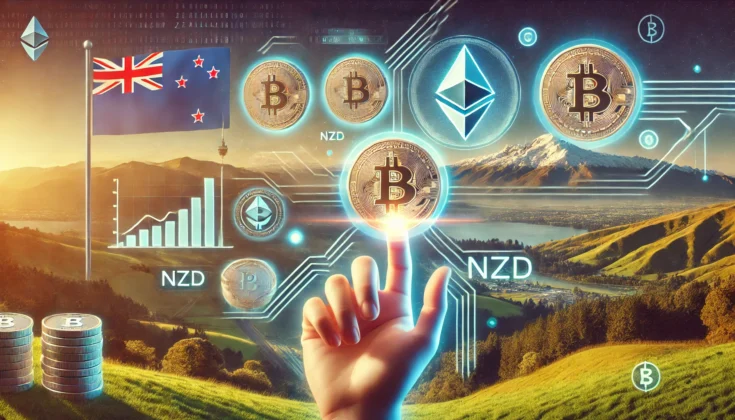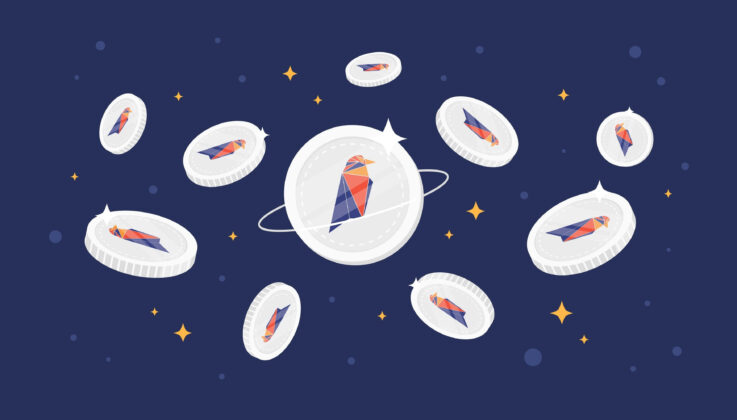What is Proton (XPR)?
What is Proton (XPR)? Learn how the Proton Chain strives to become a user-friendly crypto network for everyday consumers.


Proton (XPR) is a cryptocurrency on a unique blockchain network that is committed to making things easy for everyday consumers.
It strives to integrate blockchain, traditional finance, and the innovative Web3 ecosystem into one interconnected system that is both compliant and sustainable.
With the Proton’s crypto wallet, you can easily pay for anything in any currency, anywhere in the world, for so long as the merchant accepts payment methods that use the Proton Chain.
Key takeaways:
- Proton aims to streamline and integrate digital services into a single global platform that includes financial services, Web3, NFT, and more.
- The Proton Chain is home to the native Web3 applications in Proton’s ecosystem, such as Proton Swap (a decentralised exchange), Proton Loan (liquidity pools), and Proton Market (NFT marketplace).
- XPR tokens are mined using a delegated Proof-of-Stake model and aims to enable users to transfer XPR tokens across the network for free.
New to crypto? Start with our crypto 101 guide.
What makes Proton (XPR) unique?
At first, you may think, “That’s what other blockchains are doing”. So, what are the unique value propositions for Proton (XPR) and the Proton Chain?
1. Uncomplicated account names
The most obvious advantage that sets Proton apart from some of the most common crypto networks is that Proton uses human-readable universal names in place of a jumble of hexadecimal (letters and numbers) for wallet addresses.
Upon creating your Proton wallet, you will still go through the traditional steps — writing down your 12 recovery words, repeating them, and creating a PIN.
On top of that, you get to pick your own account name, kind of like picking a Twitter handle.
2. Transfer value in any form of currency
The Proton Chain enables a seamless transfer of values in various other cryptocurrencies, such as Bitcoin and Ethereum, on top of this single blockchain network.
Granted, these aren’t the “real” Bitcoin or Ethereum coins, but rather Wrapped Bitcoin (XBTC) and Wrapped Ethereum (XETH), which are tokens whose values are pegged to the real asset, but live on the Proton Chain.
The values of wrapped assets (also known as xTokens) are backed by smart contracts, a series of intelligent accounting code that makes sure that the network isn’t creating money (or Bitcoins) out of thin air.
The implication for this is that app developers and users from other blockchain networks can easily migrate to and from the Proton Chain.
3. Faster, eco-friendly, and fee-less
One surprising thing about Proton Chain is that it claims to allow users to transfer XPR across the network for free.
Unlike Bitcoin, the Proton Chain does not require the use of expensive crypto mining hardware, nor does it demand high power usage to process and secure transactions on a distributed ledger.
Instead, it uses a protocol called the Delegated Proof of Stake.
In principle, transaction processors (called block producers) are randomly chosen for a limited time to validate incoming transaction requests. Block producers get chosen based on the amount of XPR it has locked up in a special wallet.
Block producers require the help of stakers to delegate XPR so that block producers have enough capital power to lock up a considerable amount of XPR.
That way, the block producers can be granted the opportunity to validate blocks of transactions, and earn XPR block rewards. The rewards then get distributed among stakers on a daily basis.
In this economic system, transactions get validated faster, ordinary users don’t have to pay for transfer fees, and the environment thanks the network for not using up too much power.
According to their website, the network is able to handle up to 4000 transactions per seconds at 3-minute finality.
4. Developer-friendly
The Proton Chain makes it simple for app developers to integrate their creation into the Proton ecosystem, and not have to worry too much about regulatory compliance, such as Know Your Customer (KYC).
The blockchain network itself helps to connect app developers with a KYC store, which is a secure database where identity checks and verifications can be done in a privacy-respecting way.
The Proton Chain provides tools to help app developers comply with local and international regulations.
What does this mean for regular XPR holders?
Simply receiving and holding XPR in your own wallet does not require you to go through the KYC verification steps.
If you simply want to send crypto to someone else with a Proton wallet, you can do so without going through the steps either.
However, many apps, like traditional payment processors, are required by law to know exactly who they are handling payments for.
This is especially crucial for crypto on-ramp businesses — those who help customers exchange crypto for fiat money.
Regulatory compliance is often good for business. If Proton Chain continues to support app developers in this manner, the Proton network may become increasingly valuable for businesses as they invest time and capital into the network and use XPR more often.
What are some apps that use Proton (XPR)?
The Proton Chain is home to Web3 applications that you can expect in a thriving blockchain ecosystem, such as decentralised exchanges (Proton Swap), decentralised liquidity pools (Proton Loan), and digital identity management apps, such as Proton Sign.
Below is a snapshot of some of Proton Chain’s live apps. Curiously, there are many NFT marketplaces and projects that live on the blockchain, such as Snipcoin, Soon Market, Peculiar Inks, Spike, CrypFennecs, and Bagheads.
You’ll see in the next section that Proton Chain was optimised for the trade of NFTs.
Does Proton (XPR) support NFTs?
As mentioned before, there are many open-source NFT marketplace apps built on top of the Proton Chain. This is no coincidence.
The very first NFT marketplace on the Proton Chain is the Proton Market.
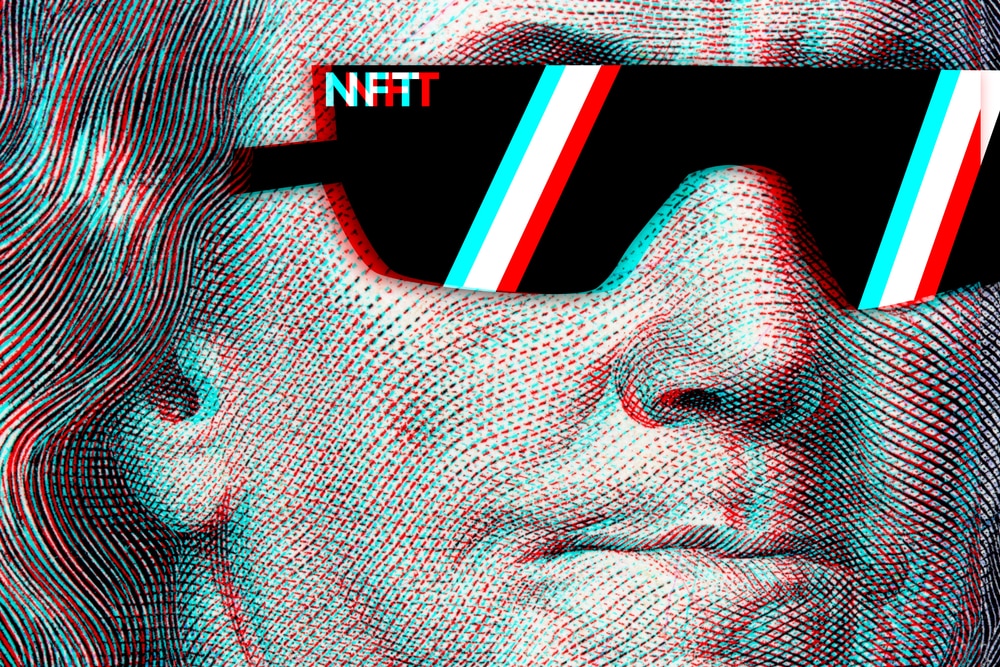
The Proton Market is open source, meaning that anyone can have access to its blueprints, and construct their own NFT marketplace — even a clone of the Proton Market, if they want.
The advantage is that anyone who is running their own website (like a personal blog, for example) can take a snippet of Proton Market’s code and turn their website into their very own NFT shop!
Here’s what the Proton Chain team says about Proton Market:
“With Proton Market being open source, you can integrate it directly into your own website free of charge. This avoids sending your visitors to another website to purchase your NFTs, eliminating the potential for losing visitors and lowering the barriers between them and your creations.”
Of course, the original Proton Market is a clean and intuitive platform, with very flexible payment options with the introduction of xTokens (e.g. using wrapped USDC).
Also read: What are non-fungible tokens (NFTs)?
Proton (XPR) tokenomics
Let’s dive into the nitty-gritty details of the Proton (XPR) token economics.
The initial plan was to set the maximum supply of Proton (XPR) at 10 billion XPR.
According to the whitepaper, the initial issue of XPR was at 200 million, which was distributed by airdrop to all token holders of MTL and LNX tokens.
(These two tokens came from two different companies Metal and Lynx who partnered up and created the Proton Chain).
The Proton (XPR) token inflation rate
According to the whitepaper, the annual token inflation rate is set at 5%.
This inflation comes from the timed release of new XPR coins in the form of staking rewards (rewards to block producers for producing blocks).
The 5% growth in XPR supply is distributed as follows:
- 2.5% to block producers,
- 1.5% to XPR stakers
- 1% to the Proton Steering Committee (aka the Proton Consortium)
The Proton Consortium is composed of a diversified selection of organisations that represent a variety of stakeholders (majority token holders).
At the time of writing, it consists of up to 59 organisations, responsible for overseeing block producers, screening block producer candidates, and voting on block rewards and blockchain development decisions.
Proton (XPR) token distribution
The Protonscan.io website gives us a clue as to who owns how much of the current supply of XPR coins. Below is a pie chart showing the coin distribution as of May 2022.
According to the data, the top 100 richest wallets own 98.03% of the coins currently in supply.
For context, the top 100 richest Bitcoin wallets own 14.38% while the top 100 richest Ethereum wallets own 40.03% of all the respective coins in circulation (as of May 2022).
When comparing Proton (XPR) to the two biggest coins in terms of market capitalisation, it seems that Proton’s tokens are not well-distributed. However, notice that around 63% of the coins are being held in decentralised exchanges and loan protocols.
It would be very interesting if information on how much the founding team and early investors is available to the public.
Right now, we can only hope that anyone wanting to invest in anything, including Proton coins, should look deep into the Web to find crucial pieces of information when they come to light.
The team behind Proton Chain
The Proton Chain is the product of two companies’ vision. Metallicus Inc. is a peer-to-peer payments platform, while Lynx is a blockchain app developer. The two combine their field to produce the compliant, intuitive, and versatile Proton Chain.
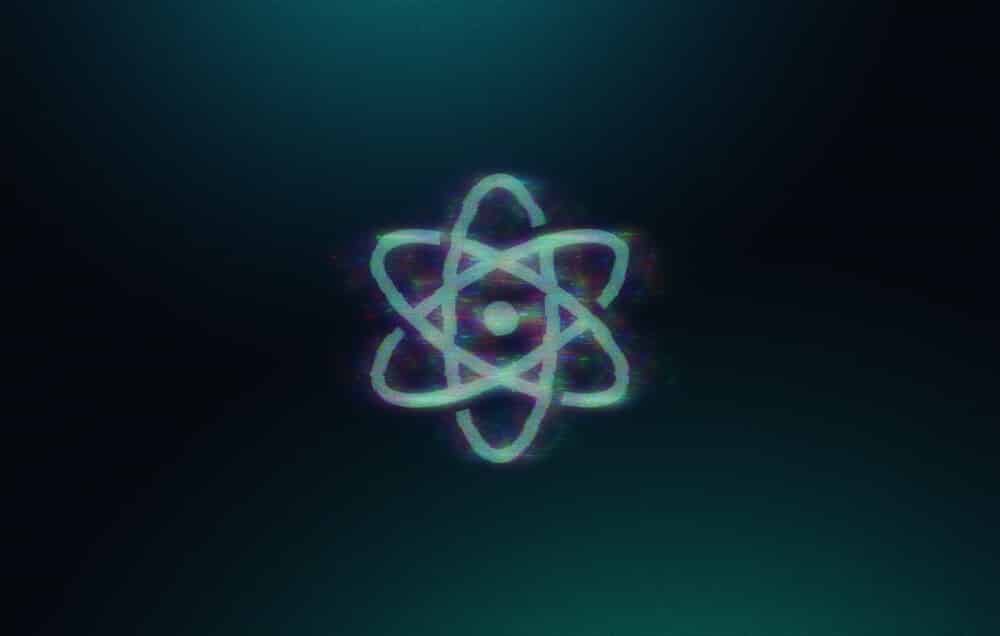
As of May 2022, the co-founders Marshall Hayner and Glenn Mariën act as CEO and CTO respectively.
Hayner founded the blockchain companies QuickCoin and Block.io. Mariën, very interestingly, developed the first online wallet for the beloved memecoin, Dogecoin.
What’s to come on the Proton Chain?
Among the exciting updates involving Proton’s official wallet, the WebAuth, the dev team at Proton Chain plans to add an Ethereum NFT bridge.
Ethereum NFTs — technically called the ERC-721 or ERC-1155 — can be sent directly to the Proton blockchain. This allows Proton users to buy, sell, send, and receive Ethereum NFTs without paying the high gas fees!
Follow up on Proton blockchain updates in their official roadmap and blog.
How to buy Proton (XPR) in New Zealand
Like all cryptocurrencies, Proton (XPR) is stored inside a crypto wallet. The official Proton website recommends using the WebAuth Wallet, which is an app compatible with your iOS or Android device.
Alternatively, you can also opt to store your assets in a hardware wallet such as Ledger or Trezor. These hardware wallets, or cold wallets, offer additional security benefits for those wanting to add a layer of protection.
With that being said, follow our guide below to learn how to buy Proton (XPR) with the WebAuth Wallet:
Step-by-step guide on how to buy Proton (XPR) in New Zealand with Easy Crypto:
- Download and set up WebAuth Wallet
The WebAuth app is a wallet that is compatible with iOS and Android, and it is the official Proton wallet that the website recommends.
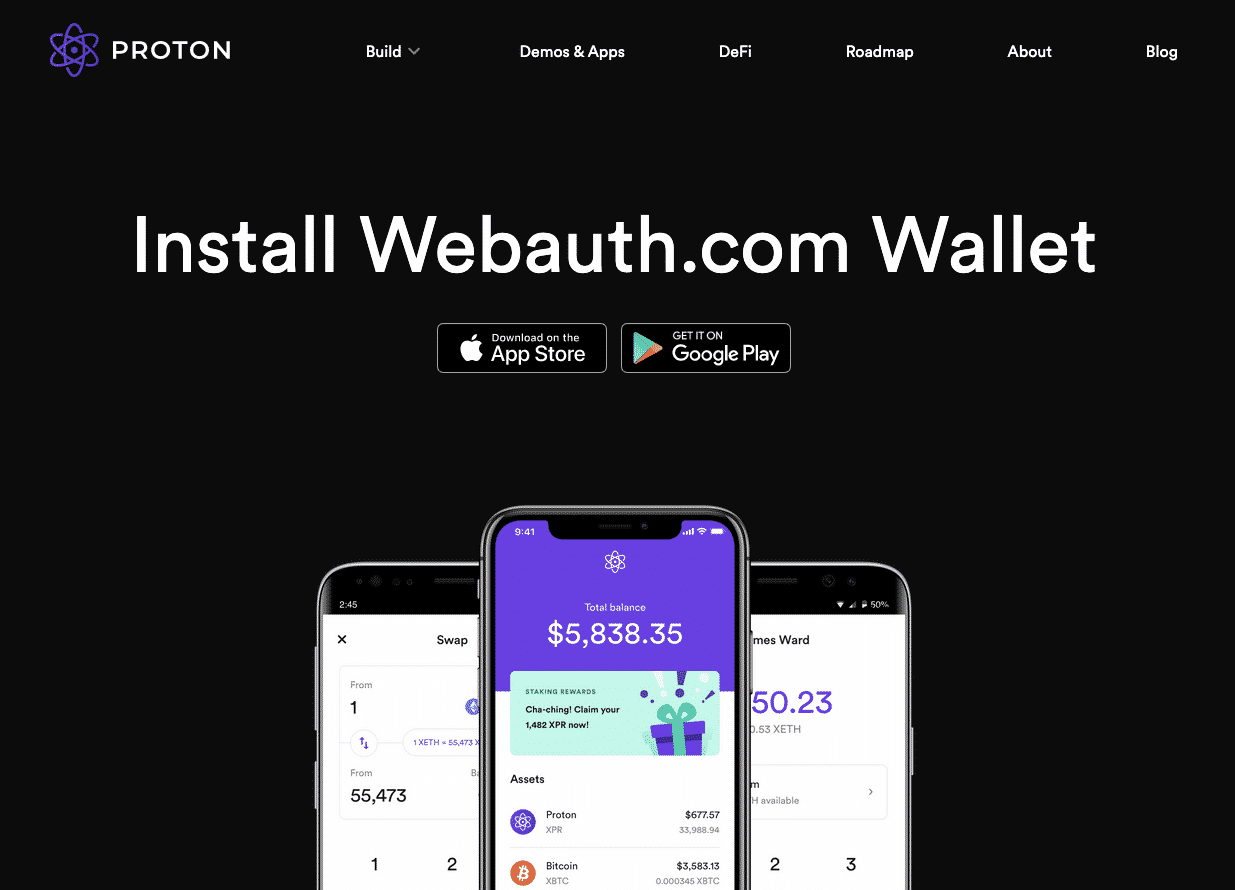
- Place order for Proton (XPR) on Easy Crypto
Once you’ve set up the wallet, visit the Easy Crypto NZ homepage, and create an account on Easy Crypto and verify your account — it will take a few minutes. If you already have a verified account with us, welcome back!
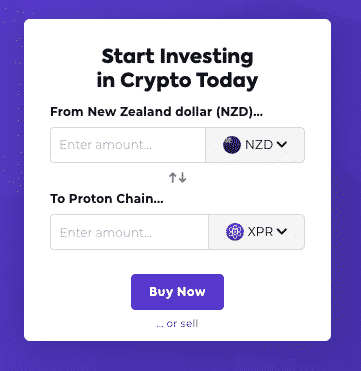
Once you’re logged in with a verified Easy Crypto account, go to the trading panel select Proton (XPR), alternatively you can also search for “Proton Chain”. Then, enter desired amount you wish to purchase. - Complete your order
Follow the next three steps to complete your order for Proton (XPR). Enter your Proton Wallet destination (make sure to double check your address), then proceed to select your preferred payment method.
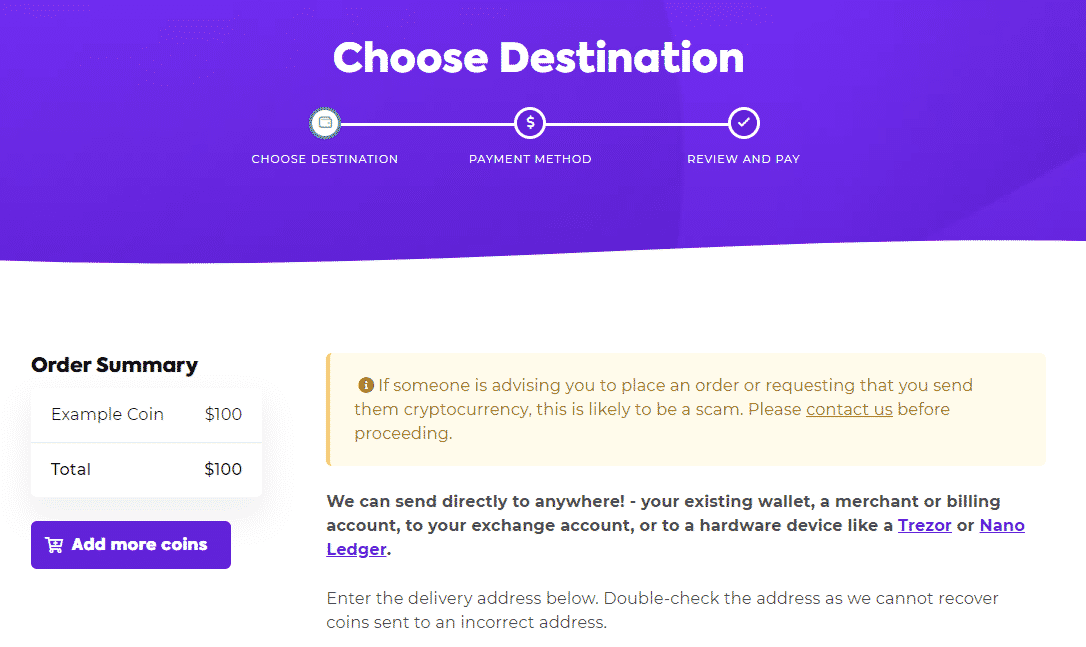
After that review and confirm your payment – that’s it! We’ll have your Proton (XPR) order sent to your wallet address in no time.
We’d also like to take this opportunity to remind you that crypto is volatile in the market, and prices can change dramatically.
Make sure you’re 100% confident in taking some risk before buying or selling any crypto asset with us or with any other services. 😊
Further reading: Explore our learning Hub for all things crypto.
Share to
Stay curious and informed
Your info will be handled according to our Privacy Policy.
Make sure to follow our Facebook, Twitter, Instagram, and YouTube channel to stay up-to-date with Easy Crypto!
Also, don’t forget to subscribe to our monthly newsletter to have the latest crypto insights, news, and updates delivered to our inbox.
Disclaimer: Information is current as at the date of publication. This is general information only and is not intended to be advice. Crypto is volatile, carries risk and the value can go up and down. Past performance is not an indicator of future returns. Please do your own research.
Last updated December 15, 2022




